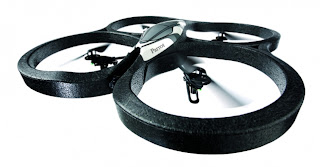By: Dr. Tom Macon, Ph. D.
The Unimaginable
Discovery
Scientists would definitely have been astonished at
the site of a wooden box about the size of a shoebox being brought out by
divers off Greece more than a hundred years ago. It would have been mind
boggling to conclude that what appeared to be a rotten piece of metal was
capable enough of predicting the positions of sun and moon in the zodiac on any
given date.
The Mechanism
Almost like a
science fiction tale of archaeologists we have an example of a mechanism which
can be easily attributed to be one of the most complex antiques in existence. The
Antikythera Mechanism or a polished
wooden case holding bronze gears within which the entire universe dances, is
basically a kind of mechanical analog computer used to calculate the movements
of stars and planets in the universe.
The Structure
that shook us
It has been estimated to be built around 87 B.C. The
device was made of bronze and it appeared very thin. It was mounted in a wooden
frame with various Greek characters inscribed over it. The Antikythera mechanism seems to fill the void that existed in
ancient scientific history about the possibility of any such device that could
predict cycles of the solar system.
How Capable is
this Mechanism
It provides a unique window on history, giving us an
opportunity to view the knowledge of the Ancient Greek. It witnesses the
mathematical and engineering capabilities that the Ancient Greeks had. The
mechanism seems to provide us with a lot of information on the wide database
that the Ancient Greeks had regarding astronomical knowledge of that time. The
device could mechanically imitate the irregular motions of the moon which are
caused by its elliptical orbit around the earth.
Intricacies deep
within
The device consists of three dials. One dial appears
in the front and two at the back. The front dial has divisions according to the
Egyptian calendar and the back dials have them regarding the Greek signs. This inner dial is movable and can be
adjusted to pay off for leap years. Since the Greeks were aware of five planets
in their time, there is a possibility that the device could have indicators for
all five planets along with references in inscriptions about Mars and Venus.
Why Should We
Care
Nothing comparable to the Antikythera device is known. Nothing like this instrument ever
preserved anywhere either from scientific text or literary insinuation. From
all the knowledge of science and technology that we have we can gather that
nothing of this sort could ever exist at a time when Greek were thought to be
non- experimental people. This was mainly due to the existence of notions of
slavery.
The
Intellectuals
Also, it has
been long recognized that in astronomy and mathematics, the Greeks were no
beginners but people of another school of thought who attained great heights of
superiority. Even the most complex devices of that time contained simple gears.
The development of Antikythera mechanism
in such a time stands as an issue that needs to be cared about.
High Time that
We Care
The mechanism had some really interesting features and
putting all pieces together it can be inferred that the whole purpose of the
device was to mechanize the cyclical relation that existed in the bodies of the
universe. There is hardly any ancient discovery that we ought to care about. A
few details taken and the whole body with mass remains just an amount of dust
collected and moulded into fine shapes.
A Mechanism that
can Open Minds
The Antikythera
mechanism however requires some more attention since it potentially is one
of the most efficient findings of modern times that can change all
pre-conceived notions in our minds on heavenly cycles. It demands care not only
because of the whole significance in astronomical terms attached to it but also
because of the need to open our minds to the acceptance of inventions that can
possibly be better than the modern times.
The Incredible
Invention
The Antikythera
mechanism is a breakthrough in modern science and an answer to innumerable
astronomical puzzles, a key to the hidden treasures of modern scientific
discoveries right from the minds of the ancient intellectuals.
References







